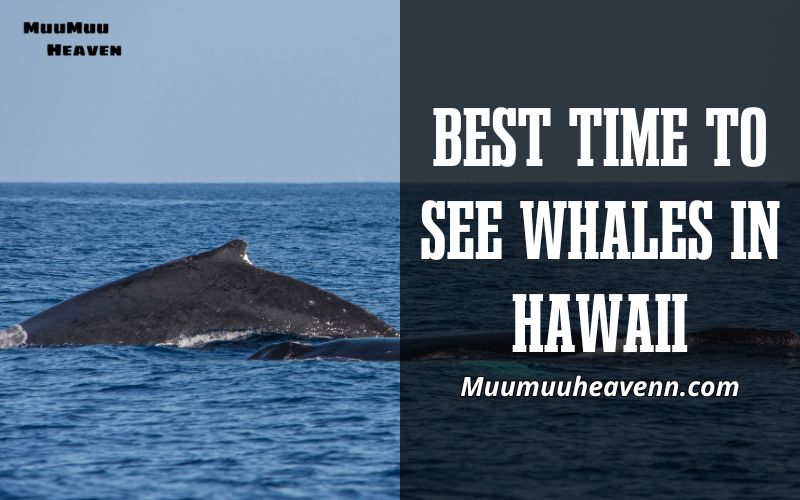Welcome to Muumuuheaven, where we not only dress you in the spirit of Hawaii but also guide you through its breathtaking natural wonders.
Embark on a mesmerizing journey to discover the best time to see whales in hawaii, a spectacle that draws nature enthusiasts and families alike.
Our guide promises to enrich your knowledge, spark your curiosity, and inspire your next Hawaiian adventure, ensuring you don’t miss the chance to witness these majestic creatures in their natural habitat.
Contents
- 1 Why Hawaii is a Premier Destination for Whale Watching?
- 2 Understanding Whale Migration Patterns
- 3 When Is the Best Time to See Whales in Hawaii?
- 4 Top Locations for Whale Watching in Hawaii
- 5 Maximizing Your Whale Watching Experience
- 6 FAQs about Best Time Whale Watching Hawaii
- 6.1 When is whale season in Hawaii?
- 6.2 What types of whale watching tours are available?
- 6.3 Can you swim with whales in Hawaii?
- 6.4 Which islands are best for whale watching?
- 6.5 What time of day is best for whale watching?
- 6.6 What should you bring for whale watching?
- 6.7 What is getting mugged in whale watching?
- 6.8 Where is the best place for whale watching in Hawaii?
- 7 Conclusion
Why Hawaii is a Premier Destination for Whale Watching?
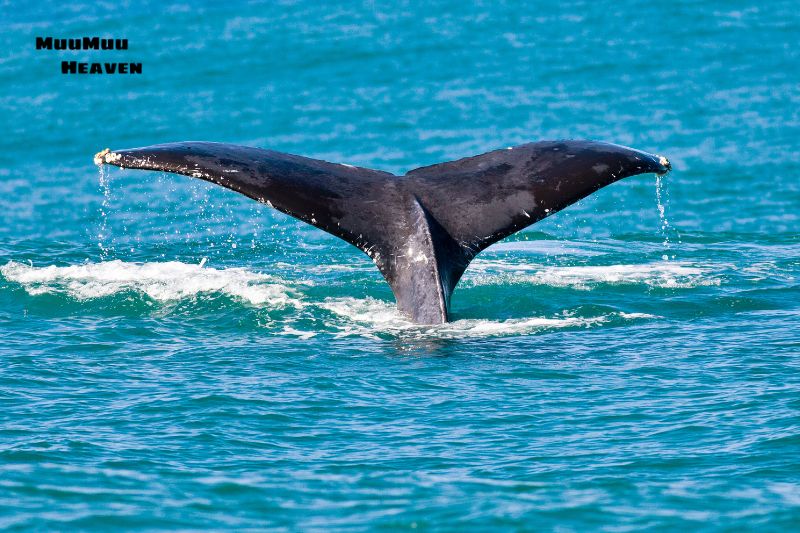
Have you ever wondered why Hawaii is such a magnet for whale watchers from all corners of the globe? It’s not just about the stunning beaches or the aloha spirit; Hawaii offers a unique, front-row seat to one of nature’s most awe-inspiring shows: whale watching.
Let’s dive into the heart of this unparalleled experience that makes the Hawaiian Islands a bucket-list destination for nature lovers.
Geography and Whales: A Match Made in Ocean Heaven
Hawaii’s geographical location is like a VIP pass for witnessing the majestic journey of humpback whales.
Nestled in the warm, welcoming waters of the Pacific, the islands sit directly along the migration route of these gentle giants. This means, from your very first day here, you’re stepping into a world where these magnificent creatures become part of the landscape.
A Symphony of Marine Life
But it’s not just about the humpbacks. Hawaii’s waters are a veritable symphony of marine life. Dolphins play tag in the waves, green sea turtles glide serenely by, and occasionally, you might catch the elusive whale shark.
It’s this rich tapestry of biodiversity that adds depth to your whale-watching adventure, making every moment unpredictable and thrilling.
Understanding Whale Migration Patterns
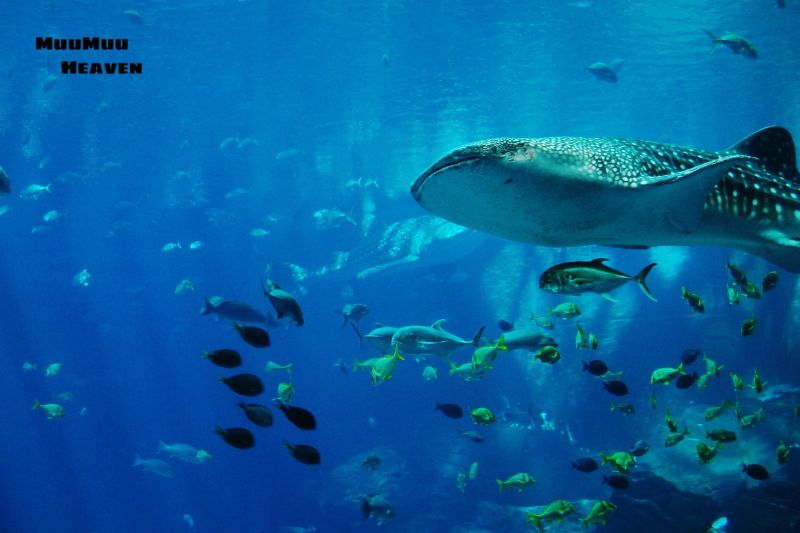
Ever wonder why these gigantic beauties decide to grace Hawaii with their presence every year? It’s all about the whale migration patterns, a natural phenomenon that’s as predictable as it is breathtaking.
Let’s dive into the nitty-gritty of why Hawaii becomes the winter playground for humpback whales and how this spectacular journey sets the scene for the best whale watching in the world.
The Journey from Cold to Warm
Imagine living in icy waters and then vacationing in the warm, tropical embrace of the Hawaiian Islands. That’s precisely what humpback whales do.
Escaping the chilly Alaskan seas, they migrate over 3,000 miles to bask in Hawaii’s warm waters. This epic journey isn’t just for kicks; it’s crucial for their survival, offering a safe haven for giving birth and raising their young away from predators.
Timing is Everything
When we talk about the best time to view whales in Hawaii, we’re really talking about tapping into their migration schedule, and our Hawaii February climate guide is essential reading for this adventure.
From December to April, the islands become a buzzing hub of whale activity. It’s during these months that the ocean becomes a stage, showcasing the awe-inspiring beauty of humpback whales.
Want a pro tip? February is the golden month, offering peak sightings and heart-stopping breaches that will leave you speechless.
A Dance of Giants
The migration of humpback whales isn’t just movement; it’s a seasonal dance that draws spectators worldwide. Their arrival transforms Hawaii into a live theater, where each splash, breach, and tail slap tells a story of journey and survival.
This natural spectacle highlights the islands’ unique position as a haven for witnessing the majestic dance of the whales, making it an unforgettable experience for every visitor.
So, if you’re planning a trip and hoping to catch this magnificent display, remember: understanding whale migration patterns is your ticket to the greatest show in the Pacific.
Get ready to be part of a tradition that continues to awe and inspire, right here in the heart of Hawaii.
When Is the Best Time to See Whales in Hawaii?
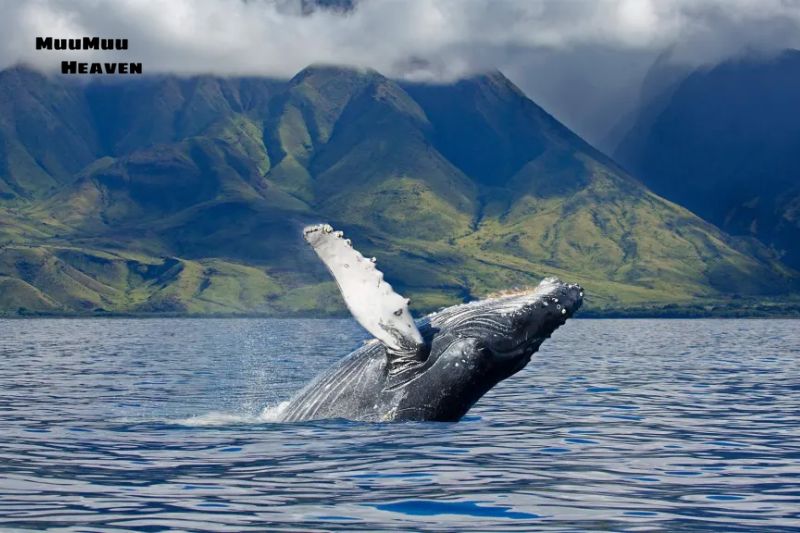
So, you’re itching to lock eyes with these marine giants during your Hawaiian getaway, right? Pinning down the best time to see the whales in Hawaii is like scoring the golden ticket to an exclusive nature show.
Let’s chart the course for your whale-watching adventure, ensuring you’re in the right place at the right time to witness these magnificent creatures in their natural habitat.
The Whale Watching Calendar: Your Year-Round Guide
The whale watching season in Hawaii is not just a time; it’s a phenomenon that captures the essence of the islands from December through April. This period is your window to the world of whales, but let’s break it down further to maximize your chances of sightings.
December to March: The Whale Watching Prime Time
Kicking off in December, the ocean starts to stir with whale activity, building up to a crescendo by February. March rolls around still buzzing with energy, as the whales prepare for their journey back.
This stretch is the heart of whale watching season, where the ocean is alive with the song and dance of humpback whales.
April Surprises: The Late Departures
April, the tail end of the season, still holds surprises for the patient watcher. It’s like the encore at a concert, where the whales give their final performances before heading back to colder waters.
This month can offer some of the most intimate encounters, as the whale crowds thin out, but the magic remains.
Month-by-Month Breakdown: Picking Your Moment
- December: December: The grand arrival. Whales begin to dot the Hawaiian waters, making early sightings exciting and fresh. Alongside these natural marvels, the hawaii weather outlook for december offers a backdrop of dynamic skies and comfortable climates, perfect for witnessing the seasonal wonders.
- January to February: Hawaii travel peak season. The ocean’s version of rush hour, where whale activity is at its height, and the chances of witnessing breaches and tail slaps are unparalleled.
- March: The playfulness continues. A great time for those who enjoy a mix of adventure and serenity, as the whales are still active, but the human crowds start to dwindle.
- April: The serene goodbye. For those who cherish quiet moments, April offers the chance to say a personal farewell to these majestic travelers.
Top Locations for Whale Watching in Hawaii
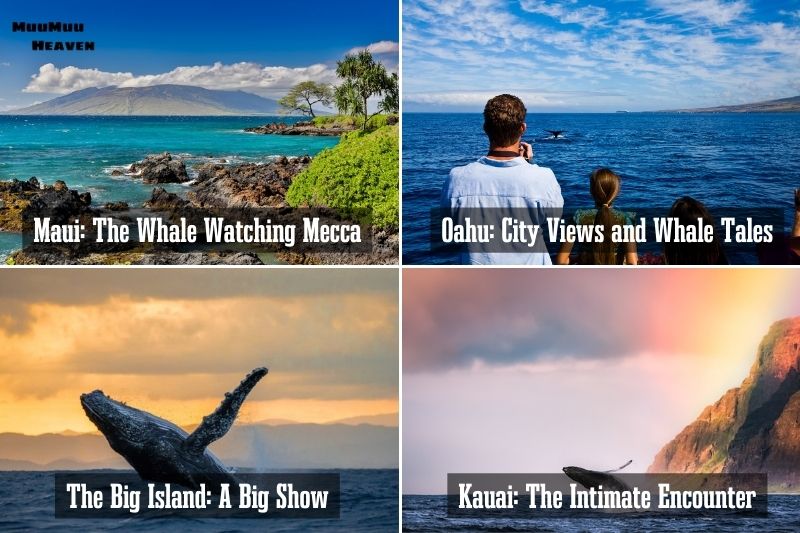
Alright, now that you’re clued up on the when, let’s tackle the where of locking eyes with these ocean behemoths in Hawaii.
Each island has its secret spots, its hidden gems where the whales come to play, sing, and leap into the air as if putting on a show just for you. Here’s the lowdown on where to plant yourself for the ultimate whale-watching extravaganza.
Maui: The Whale Watching Mecca
First up, Maui, often dubbed the whale-watching capital. Why, you ask? Well, the shallow Auau Channel between Maui, Lanai, and Molokai is like a whale playground.
For a spot that offers not just sightings but an immersive experience, head to Lahaina or the shores of Kapalua. Here, the whales are so close you can almost whisper your greetings.
Oahu: City Views and Whale Tales
Don’t think you need to stray far from the city life to catch a glimpse of these marine marvels.
Oahu’s south shore, particularly around Waikiki and Hanauma Bay, provides a stunning backdrop of city skyline and playful whales. It’s where urban meets ocean in the most spectacular way.
The Big Island: A Big Show
The Kohala Coast of the Big Island serves up some serious whale action. With deep waters close to shore, you’re in for a treat as these creatures often come near, giving onlookers a show to remember.
Plus, the lack of light pollution here makes for an added bonus – a starry spectacle overhead while you wait for the next whale to breach.
Kauai: The Intimate Encounter
For those seeking a more intimate setting, Kauai’s Poipu Beach and the Kilauea Lighthouse offer serene spots for whale watching. The rugged coastline and towering cliffs provide a dramatic backdrop for every tail slap and breach.
There you have it, a rundown of the top spots across the Hawaiian Islands for an unforgettable whale-watching adventure. Each location offers a unique perspective on these magnificent creatures, ensuring that no matter where you choose, you’re in for a heart-stirring experience.
Maximizing Your Whale Watching Experience
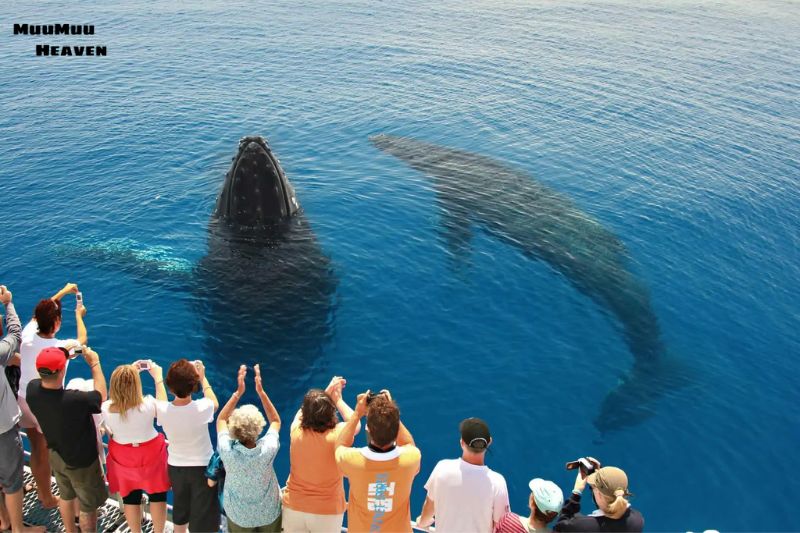
Got your spots all picked out? Great! Now let’s make sure your whale watching adventure turns from good to absolutely epic. There’s a bit of an art to making the most out of your experience, and lucky for you, I’ve got the inside scoop.
Gear Up for the Adventure
First thing’s first: don’t forget your camera. This might seem obvious, but you’d be surprised how many people kick themselves for missing out on that perfect shot because they left their camera in their hotel room.
And while we’re on the subject, a pair of binoculars is your best friend. They bring the action closer, making you feel like you’re right there with the whales. Check out Hawaii travel checklist for details.
Early Bird Gets the Whale
There’s something magical about the ocean at dawn. It’s calm, serene, and you guessed it—perfect for whale watching.
Being an early riser not only gives you the advantage of a less crowded experience but also catches the whales in their most active state. Plus, the early morning light is just unbeatable for photos.
Respect the Giants
This goes without saying, but keeping a respectful distance from these magnificent creatures is crucial. Not only is it the law, but it’s also a part of being a responsible wildlife observer.
Remember, we’re in their home. Use zoom lenses for close-ups and enjoy the thrill of the experience without intruding on their space.
Patience is Key
Nature operates on its own schedule, and whales are no exception. There might be times when the sightings are few and far between, but patience pays off. Those moments of anticipation make the sightings all the more rewarding. Plus, it gives you time to soak in the stunning Hawaiian scenery.
Join a Guided Tour
For first-timers, a guided tour can enhance the experience tenfold. Knowledgeable guides can provide insights into whale behavior, helping you understand and appreciate what you’re witnessing.
Plus, they know the best spots and the right times, taking the guesswork out of your adventure.
There you have it—your guide to making the most out of your whale watching journey in Hawaii. Gear up, rise early, show respect, be patient, and consider a guided tour.
Follow these tips, and you’re on your way to an unforgettable encounter with the ocean’s most majestic inhabitants. Ready to dive into the adventure? Hawaii’s whales are waiting for you.
FAQs about Best Time Whale Watching Hawaii

When is whale season in Hawaii?
The whale season in Hawaii typically stretches from mid-December through mid-April, with the peak season being January and February when humpback whales are most numerous.
What types of whale watching tours are available?
You can choose from various types of tours, including catamaran, sailboat, raft, kayaking, and outrigger canoe tours. Each offers a unique experience, from large group tours on catamarans to more intimate, close-to-the-water adventures on rafts or kayaks.
Can you swim with whales in Hawaii?
No, it’s illegal to approach a whale within 100 yards under the Endangered Species Act and the Marine Mammal Protection Act to ensure the safety of these majestic creatures.
Which islands are best for whale watching?
While whales can be spotted off all the main Hawaiian Islands, Maui, Lanai, Molokai, the north coast of Kauai, and the Kohala coast on the Big Island are noted for having higher concentrations of humpback whale sightings.
What time of day is best for whale watching?
There’s no specific time of day when whales are most active, but many tours offer early morning or sunset cruises to catch sightings of whales.
What should you bring for whale watching?
It’s recommended to bring binoculars for a closer look, wear sunscreen to protect from the sun’s rays, and always maintain a respectful distance from the wildlife.
What is getting mugged in whale watching?
Getting mugged refers to the experience when whales, out of curiosity, come close to the watching boat. While boats must keep a distance of 100 yards from the whales, the animals themselves can approach closer if they choose.
Where is the best place for whale watching in Hawaii?
Maui is considered the top spot for whale watching due to the large concentration of whales in the protected waters of the Maui Nui Basin, particularly in the Au’au Channel between Maui, Lanai, and Molokai.
Conclusion
Wrapping up this whale of an adventure, it’s clear that Hawaii offers some of the most stunning opportunities to witness these ocean giants up close. Armed with the best times and places, along with insider tips to enhance your viewing, you’re all set for an unforgettable experience.
Remember, every splash, every leap, and every serene swim is a story being told in the vast, blue Hawaiian waters. So, pack your enthusiasm, respect for nature, and a sense of adventure as you set off to meet the whales. Hawaii’s oceanic wonders are waiting to leave you awestruck. Happy whale watching!

